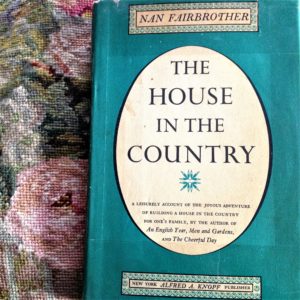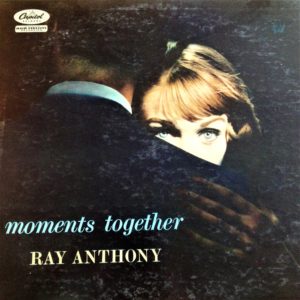
The final half of this week’s One Great Sentence has stayed with me: “Something waits beneath it; the whole story doesn’t show.” It’s about the winter landscape, but couldn’t it also apply to the craft of storytelling? When we pursue a story, often we’re motivated by this desire to find the thing that’s hidden, that’s not showing. When we start reporting, we compile much more material than we could ever use; the rest will be underneath, supporting the material we do use. And once we start writing, we must make choices. We show one moment to illuminate a thousand moments.

Jerry Foster was a daredevil helicopter pilot who helped changed the face of TV news.
Jack Hitt and the birth of live-action news with “What Goes Up.” In this interview about his story for (the great) Epic magazine about a daredevil helicopter pilot for a Phoenix TV station in the 1970s and ’80s, Hitt gives a classic description of his writing process. First he compiles all his notes on his computer. Then, he says, “I print everything out and pin it on the one-inch-wide corkboard I have around my office. That way I can stare it at it without turning a page. Then I get a cup of coffee and read it back and forth like 100 times. Then I run to my desk and write notes. Then I keep staring at it. Then I watch ‘The Wire’ and come back feeling guilty and stare at the paper again.” This is great too, about the writers who inspire him: “Out of modern writers, like anybody with a brain, I read Susan Orlean and David Grann. When I see those names I’m so delighted, because it means I get to lock the door, get a cup of coffee and know I’m going to have a 45-minute payday, just this deep pleasure.”
The soundtrack: “Spinning Wheel,” by Blood, Sweat & Tears. What other song could I have chosen for this? “What goes up must come down/spinning wheel got to go round/Talking about your troubles, it’s a crying sin/Ride a painted pony, let the spinning wheel spin.” (For years I thought this was about an actual spinning wheel and couldn’t figure out how a painted pony fit into all this. Then I finally figured out that it’s a carousel horse and that this is a different type of spinning wheel. This version, unlike the single version, has several seconds of carousel toodling music at the end to make it even more clear.”)
One Great Sentence
“I prefer winter and fall, when you feel the bone structure of the landscape — the loneliness of it, the dead feeling of winter. Something waits beneath it; the whole story doesn’t show.”
Andrew Wyeth, American painter. Read why we think it’s great.

Imrig Halva has been made by Armenian families in America for generations.
Liana Aghajanian and the story of immigrants in America, one recipe at a time. In her blog, “Dining in Diaspora,” Aghajanian is uncovering the hidden histories in her own Armenian American heritage one recipe at a time. Here’s a great behind-the-curtain description of the interview from Olga Kreimer: “Recently, we spoke by phone about connecting with fellow immigrants, the power of cuisine to help us understand diversity and the challenge of telling food stories that are about more than food, too. We talked about the value of working on projects outside of the career hustle, the journalists who help us fine-tune our own artistic compasses, and the significance of telling stories about immigrants in America right now. Unfortunately, no record remains of that great conversation. (Check your recording devices thrice, everybody.) Luckily, Aghajanian agreed to chat a second time.”
The soundtrack: “Hinkala,” by Armenian Public Radio. On the Armenian American band’s website, they say, “Members of Armenian Public Radio … all grew up listening to music that is sentimental not only to the older generation of Armenians, but also the community as a whole. Living in a musically vibrant Diaspora, the trio decided to revive these centuries-old folk songs and make it their mission to introduce their interpretation to the community.” Nice.
What I’m reading online: Raising a Teenage Daughter*, by Elizabeth Weil. The asterisk in the title of this California Sunday piece is explained in the deck hed: “with comments and corrections by Hannah W Duane.” This story is so Annotation Tuesday! It’s a brilliant idea, having the mom write the piece about raising her daughter and the daughter (in a very teenage way) add sometimes snarky, sometimes quite deep clickable comments. I’d love to do an annotation of it, which would either be very Escher (for the parent generation) or meta (for the teenagers).
Derivative Sport: The Journalistic Legacy of David Foster Wallace, by Josh Roiland. Another wonderful concept. In this piece for Longreads, Roiland asks some of our best literary journalists how they’ve been shaped by the godlike late writer. I love this bit from Leslie Jamison: “I should probably start by saying — and the very insertion of this disclaimer is itself probably a symptom of Wallace’s imprint on my style, the sudden plunge into intimate conversation with one’s reader, not infrequently by way of apology! — that Infinite Jest has been, by quite a bit, the most personally meaningful to me of all of the Wallace writing that I’ve read.”
The Conversation: Seven Women Discuss Work, Fairness, Sex and Ambition. The New York Times gathered seven prominent women, from Anita Hill to Amanda Hess, to talk about sexism in the workplace. This line, from Lynn Povich, stood out to me: “I think it’s become clear over the last couple of months that many men feel privileged that they can just invade your space, invade your body. And I do think this is a moment where people have to become conscious that you simply cannot do that.”
Nobody’s Ever Ready: Snow in Poetry, Fiction, and Film. Published as much of the Northeast had its first real snowfall, this piece in the literary site The Millions was perfectly timed. Such a wonderful compilation! Although I do mourn the omission of “McCabe and Mrs. Miller,” which surely has the most haunting snow scenes in all of moviedom. Even when the scenes are inside, Altman makes it look like it’s snowing.
 What’s on my bedside table: “The House in the Country,” by Nan Fairbrother. This is the British version of one of my favorites, “Mr. Blandings Builds His Dream House.” (If you haven’t seen the movie version, you must! Cary Grant and Myrna Loy are absolutely classic in it, with such married-couple chemistry.) In this book, a London couple gets restless and decides to build a house in the country. By chance, it begins at this time of year: “The change began almost unnoticed at the turn of the year, no more at first than a vague indefinable restlessness, a disorientation of the inward-looking living of winter, as squirrels rouse from sleep and look about them in spells of mild weather.” She compares the seasonal cycles to her own desire for a spring-like rebirth in a new home.
What’s on my bedside table: “The House in the Country,” by Nan Fairbrother. This is the British version of one of my favorites, “Mr. Blandings Builds His Dream House.” (If you haven’t seen the movie version, you must! Cary Grant and Myrna Loy are absolutely classic in it, with such married-couple chemistry.) In this book, a London couple gets restless and decides to build a house in the country. By chance, it begins at this time of year: “The change began almost unnoticed at the turn of the year, no more at first than a vague indefinable restlessness, a disorientation of the inward-looking living of winter, as squirrels rouse from sleep and look about them in spells of mild weather.” She compares the seasonal cycles to her own desire for a spring-like rebirth in a new home.
 “What’s on my turntable: “Moments Together,” by Ray Anthony. I wouldn’t normally buy an album by a big-band leader and trumpeter (even though it’s quite lovely to imagine swirling around a ballroom in a frothy gown as the band plays something swoony). This is an album I bought for the cover. What I particularly like is that although it’s called “Moments Together,” the woman has a look of calculation on her face, like she’s exchanging glances with a far more promising dance partner. Either that, or an intense loneliness, bordering on desperation.
“What’s on my turntable: “Moments Together,” by Ray Anthony. I wouldn’t normally buy an album by a big-band leader and trumpeter (even though it’s quite lovely to imagine swirling around a ballroom in a frothy gown as the band plays something swoony). This is an album I bought for the cover. What I particularly like is that although it’s called “Moments Together,” the woman has a look of calculation on her face, like she’s exchanging glances with a far more promising dance partner. Either that, or an intense loneliness, bordering on desperation.
If you want to chat about storytelling (or music), I’m Storyboard editor Kari Howard, and you can reach me at editor@niemanstoryboard.org. Or you can find me at @karihow on Twitter.


